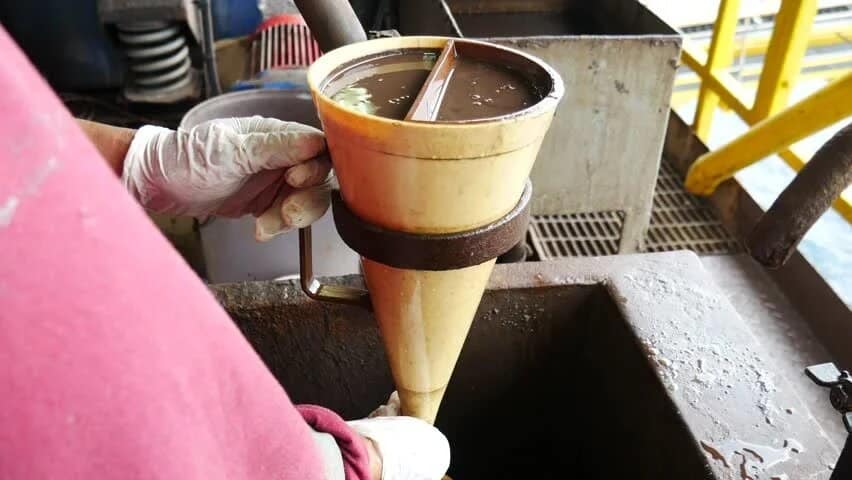In recent years, there has been a growing interest in studying the potential risks associated with naturally occurring radioactive materials (NORMs) and toxic metals found in drilling fluids and their additives. These concerns have primarily arisen due to the exposure duration faced by petroleum well drillers. Consequently, a crucial question has emerged: is drilling mud hazardous? This article aims to explore the answer to this inquiry, along with delving into the toxicity of drilling mud.
Is Drilling Mud Hazardous
Drilling fluid components are typically not hazardous, but disposal procedures may be required in areas with toxic pollutants. The volume of waste material can be reduced through recirculating systems. Drilling mud Additives should be chemically inactive, biodegradable, and non-toxic.
Maintaining a clean work site is important to ensure the installation of a clean product pipe and a safe work area. Pits may be needed to collect excess drilling fluid and should be emptied as necessary.
To minimize the potential hazards, it is crucial to adhere to appropriate safety protocols during drilling operations. Furthermore, the handling and storage of drilling muds should align with the safety data sheets (SDS) provided by the manufacturer.
Here are the physical and chemical properties of the drilling mud to help you answer this question: is drilling mud hazardous?
| Physical state |
Granules |
|
Color |
Off white |
|
Odor |
Odorless |
|
Ph |
7.75 (1%) |
|
Specific gravity @ 20 C (Water=1) |
0.8-1.0 |
|
Density @ 20 C (lbs./gallon) |
6.66-8.33 |
|
Bulk Density @ 20 C (lbs/ft3) |
52 |
|
Stability data |
Stable |
|
Conditions to avoid |
None anticipated |
|
Incompatibility |
Strong oxidizers |
|
Hazardous decomposition products |
Ammonia, Oxides of nitrogen, Carbon monoxide, and carbon dioxide |
Is Drilling Mud Toxic
Drilling mud, when it comes into contact with the eyes or skin, can cause mild irritation. Workers and crew must take precautions to avoid direct exposure to this substance. However, there is no known evidence suggesting that drilling mud can aggravate existing medical conditions. Additionally, no available data indicates that the components present in drilling mud, at concentrations greater than 1%, pose chronic health hazards.
Is drilling mud toxic? In terms of oral toxicity, the LD50 value for drilling mud is greater than 5000 mg/kg in rats, indicating a relatively low level of toxicity if ingested.
Handling any potentially hazardous substances with caution and following appropriate safety protocols is important to minimize any potential risks.
Controls and Personal Protection
When working with drilling mud, it is important to implement proper controls and personal protection measures. Engineering controls should be utilized, ensuring that drilling mud is used in a well-ventilated area.
However, if these controls are insufficient in preventing excessive exposures, the selection and correct use of personal protective equipment (PPE) should be determined by an industrial hygienist or qualified professional, taking into account the specific application of drilling mud.
Respiratory protection is typically not required, but if there is a possibility of significant exposure to drilling mud, a dust/mist respirator with a filtration efficiency of 95% is recommended.
Hand protection can be provided by using normal work gloves, while skin protection can be achieved by wearing normal work coveralls. Besides, it is critical to wear safety glasses or goggles to protect the eyes against any possible exposure.
First Aids Measures
When working with drilling mud, it is important to be aware of the first aid measures to take in case of any incidents.
- If drilling mud is inhaled, the affected person should be promptly moved to an area with fresh air.
- If respiratory irritation occurs or breathing becomes difficult, immediate medical attention should be sought.
- In the event of skin contact, wash the affected area with soap and water.
- If drilling mud comes into contact with the eyes, it is crucial to flush the eyes with plenty of water for at least 15 minutes.
- In case of ingestion, vomiting should not be induced. Instead, the affected person should slowly dilute the substance with 1-2 glasses of water or milk and seek medical attention.
- Nothing should be given by mouth to an unconscious person.
For information about drilling mud cost, contact our experts
Conclusion
Is drilling mud hazardous? It is important to handle and dispose of drilling mud properly to minimize potential risks. The stability and lack of expected hazards in the physical and chemical properties of drilling mud are evident. While mild irritation may occur if drilling mud comes into contact with the eyes or skin, there is no clue that it causes long-term health risks or worsens existing medical conditions.
To ensure the safe use of drilling mud, it is crucial to implement appropriate controls, personal protective equipment, and safety protocols.




